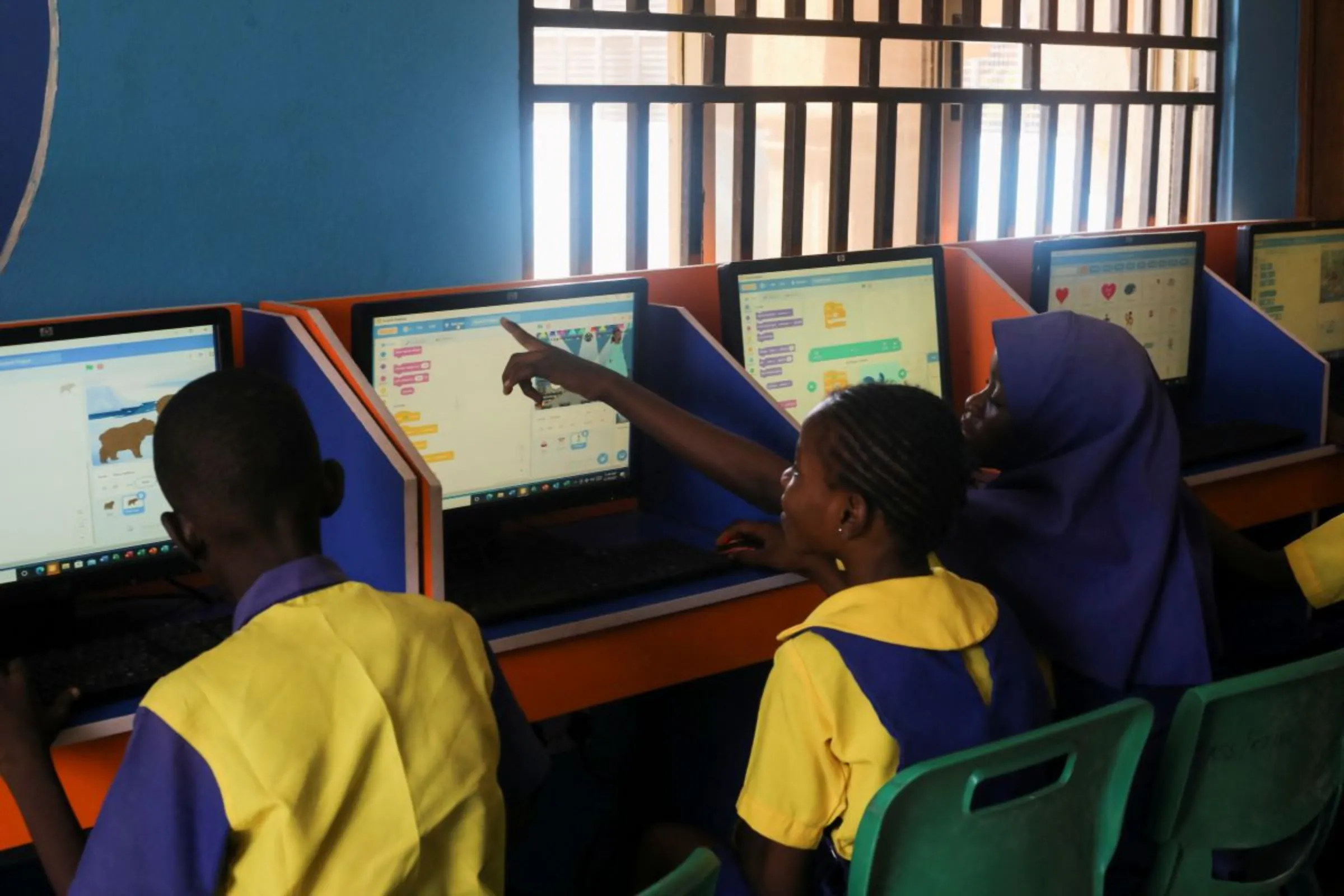Why we need child rights by design

Children attend a computer class in the area of Kuje, in Abuja, Nigeria February 18, 2022. REUTERS/Afolabi Sotunde
How tech companies should implement designs that protect children from the harms associated with the online world
By Professor Sonia Livingstone, Digital Futures Commission, and Mikiko Otani, UN Committee on the Rights of the Child.
A child’s life today looks vastly different to a child’s life 20 years ago. Mobile phones were scarcer, computers stayed on a desk in one room, and tablets were just a futuristic fever dream. Now, digital technology is an integral part of many children’s daily lives in many parts of the world, whether that means building a social life, consuming media, or doing their schoolwork. Schooling is now almost impossible without the assistance of technology. Exacerbated by the Covid-19 pandemic, a host of digital products and services are now commonplace in the classroom, as well as essential for completing homework and, of course, entertainment and play.
Research on children’s online safety and the risks associated with being online have produced truly worrying results. Calls from child safety experts are clear – just like we have guidance for physical toys to avoid choking hazards or sharp edges, we need guidance for digital developers designing for children. But this doesn’t have to be all negative. New digital technologies create so many opportunities for children, enabling them to be empowered and use their agency to grow into well-rounded individuals who achieve their fullest potential.
How we address this
Over the past three years, the Digital Futures Commission has built on the authoritative guidance from the UN Committee on the Rights of the Child to create a holistic set of principles for innovators to put children’s best interests at the heart of their digital products. Responding to considerable consultation with designers and, most importantly, with children themselves, the proposal for Child Rights by Design prioritises eleven key principles and bundles them into a handy, accessible toolkit to ensure age-appropriate design, privacy, and the wellbeing of children are considered from the get-go rather than becoming an afterthought. This one-stop shop serves the digital tech industry on a silver platter, so they can protect children to the best of their ability.
Crucially, we believe products designed for children should go beyond protection – they should actively empower children’s development and agency. Children told us that they expect the digital environment to be safe enough for them to be free to play, learn and develop - this includes being able to test boundaries and learn from their mistakes. They also expect those handling their data, especially businesses, to respect their privacy, keep their data safe, and use it to benefit children. Overall, children expect the digital world to treat them fairly, for example, by providing more accessibility features and avoiding cost barriers. Last but not least, children want to be consulted by those developing the digital products and services they use, and that affect them. They have lots of good ideas and they want their views taken seriously!
Digital technology is more deeply embedded into children’s upbringing every day, and it is imperative that these principles be adopted and implemented immediately. A ‘by design’ approach must engage the whole organisation, from the CEO onwards, and Child Rights by Design should be adopted not only for digital products and services intended for children but also when it comes to the many products and services that children use – and, even those they don’t use personally but that still impact on their lives.
Where we go from here
We’re already seeing national and regional governments getting ahead of the game. The UK, the EU, and the US (at least on the federal level) are all moving ahead with legislation which ensures digital technology is age-appropriate and designed with children in mind so that they are protected and empowered every step of the way in their digital lives. Legislators are setting the bar, but can industry rise above it?
By implementing protective and empowering changes in design for children, developers and Silicon Valley stalwarts can protect themselves from falling foul of the inevitable future regulation (and the hefty fines that come with it), as well as save valuable time and resources – and improve public trust.
However, during the meteoric rise of digital technology over the past 20 years, what developers lacked were clear instructions on how to navigate this new and limitless arena. By translating the UN Convention on the Rights of the Child into the language of designers and product developers, the Digital Futures Commission has filled the knowledge gap and given industry exactly what they need to ensure the protection and empowerment of children now and in the future.
Children should be safe wherever they are, whether it be in front of the X-Box or the maths exercises. And the ball is now in big tech’s court to make sure that children’s rights are a consistent and sustainable reality in our digital world.
Any views expressed in this opinion piece are those of the author and not of Context or the Thomson Reuters Foundation.
Tags
- Content moderation
- Tech and inequality
- Tech regulation
- Social media
- Data rights
Go Deeper
Related
Latest on Context
- 1
- 2
- 3
- 4
- 5
- 6
Most Read
- 1
- 2
- 3
- 4
- 5


















